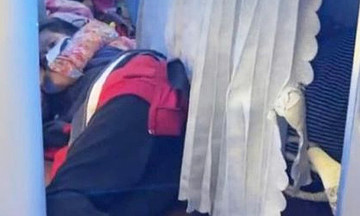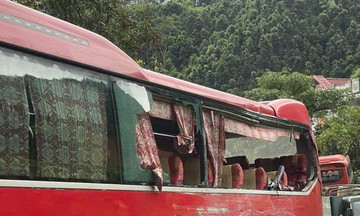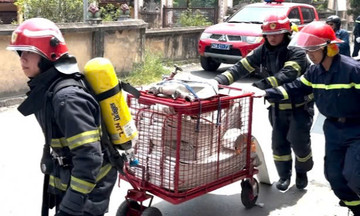For the past two weeks, the home of 63-year-old Trinh Van Lai in Dong Thanh commune has been filled with visiting relatives. Mr. Lai recently located the remains of his brother, Trinh Van Hai, a soldier who died during the Vietnam War. "No words can express our feelings right now. Finally, our late mother’s dying wish is about to be fulfilled," Mr. Lai said.
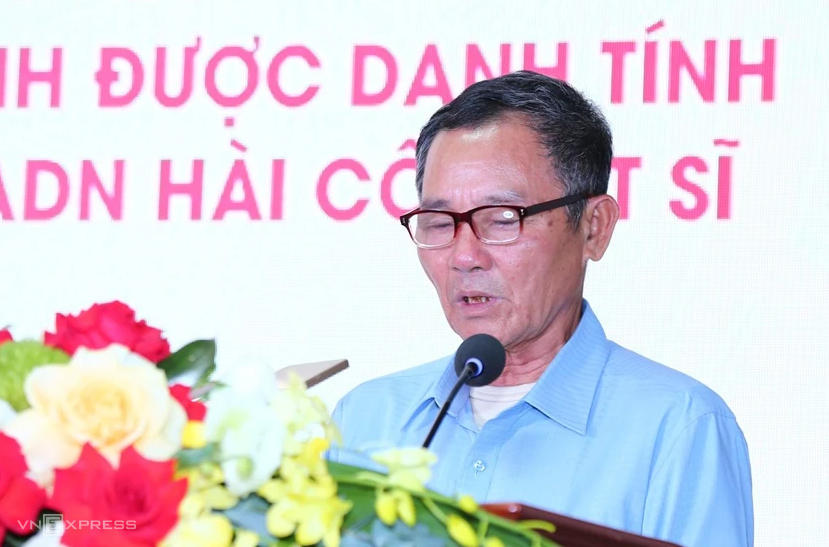 |
Trinh Van Lai is emotional after his family received news of the discovery of his brother Trinh Van Hai's remains. Photo: Le Hoang |
Trinh Van Lai is emotional after his family received news of the discovery of his brother Trinh Van Hai's remains. Photo: Le Hoang
Trinh Van Hai was born in 1952 into a poor farming family with six children in Thanh Son village, Thanh Loc commune, formerly Hau Loc district. In the spring of 1970, like many other young men in his village, Trinh Van Hai volunteered to join the army.
Trinh Thi Mech, Mr. Hai’s older sister, recounted how her younger brother, not yet old enough to enlist, added a year to his age to meet the requirements. "He was so young, what did he know? That year, he heard that the son of our cousin had joined the army, so Hai was thrilled and determined to go," Ms. Mech recalled.
Because of his small stature, Mr. Hai had to wear raised rubber sandals to add a few centimeters to his height, and put handfuls of pebbles in his pockets to meet the weight requirement for the physical examination.
From the day Mr. Hai went to war, his family received no letters or any information about him, only knowing that he was "fighting on the southern front." In the summer of 1971, the family unexpectedly received a death notice for Trinh Van Hai from his unit, but with no precise information about where he died or was buried.
After the reunification of the country, the family organized several searches, but all trips were fruitless. They assumed Mr. Hai had died on the Route 9 Southern Laos front in Quang Tri province, so they focused their search on clues there.
The fact that her son remained on the battlefield caused Lai Thi Chong years of anguish. Before her passing in 1982, she held Mr. Lai’s hand and told him and his siblings, "Later, if you have the means, you must find Hai and bring him back to me..." Due to difficult circumstances, Ms. Chong’s dying wish remained unfulfilled.
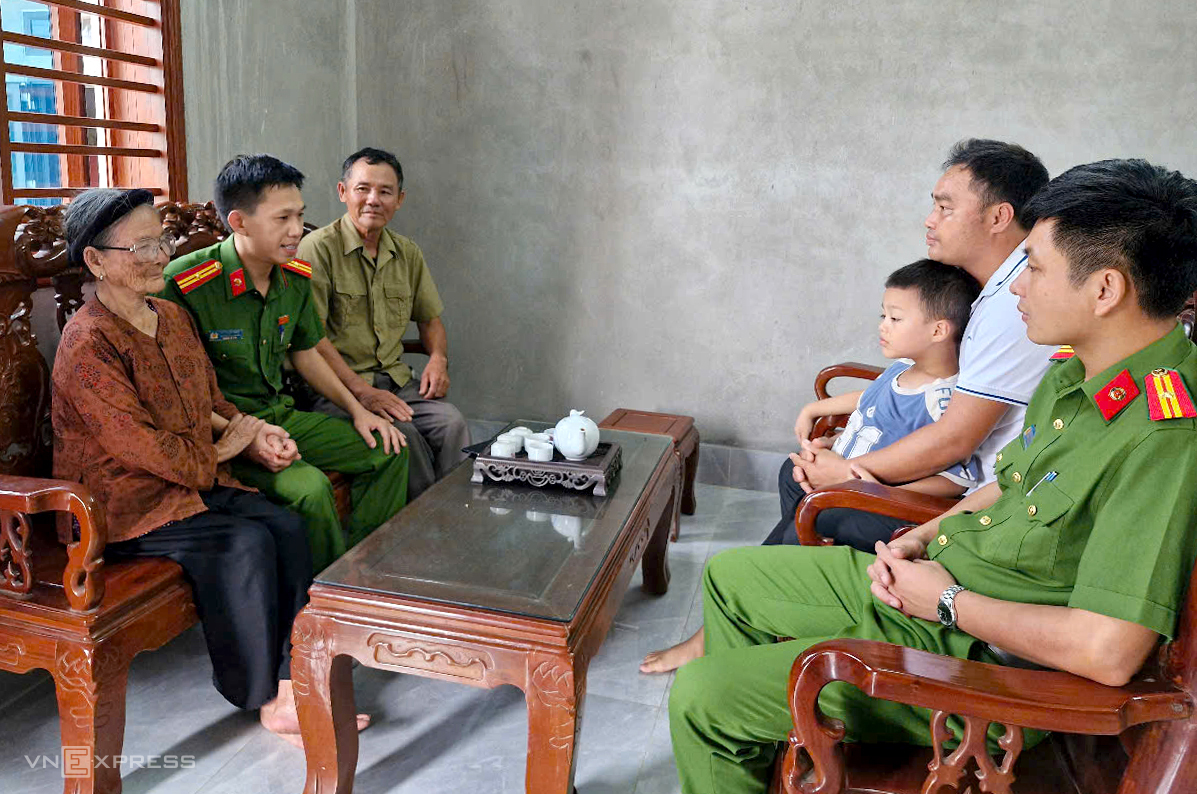 |
The police announce the DNA identification results to Mr. Lai's family (far left) and Ms. Mech. Photo: Le Hoang |
The police announce the DNA identification results to Mr. Lai's family (far left) and Ms. Mech. Photo: Le Hoang
At the end of 5/2025, Mr. Lai's family was informed by the commune police that there would be a DNA collection drive for relatives of unidentified fallen soldiers to assist in the search. Two direct relatives of Mr. Hai provided samples, along with information from the national population database.
Over a month later, joy arrived unexpectedly when authorities identified that Trinh Van Hai's remains were interred at Duc Co cemetery in Gia Lai province. "The day we heard the news, the whole family cried with happiness. Now we can fulfill our mother's last wish," Mr. Lai shared.
Knowing his brother's resting place, but due to current circumstances, Mr. Lai’s family has not yet been able to travel the over 1,000 km to pay their respects. He said that the extended family has met and agreed to request support from the authorities to bring Mr. Hai's remains back to his homeland, whatever the cost.
Trinh Van Hai is one of two cases in Thanh Hoa province whose identities have been confirmed through DNA identification, an effort led by the Thanh Hoa Provincial Police in collaboration with relevant professional units. The other is Trinh Quang Lam, born in 1952, from Nga An commune.
On 26/7, at the peak conference for DNA sample collection from relatives of unidentified fallen soldiers and the announcement of DNA identification results for soldier remains, the Thanh Hoa Provincial Police stated that the province has over 37,000 unidentified fallen soldiers. Over 10,000 have no surviving relatives for DNA samples, while approximately 27,000 have over 36,000 relatives who could provide samples.
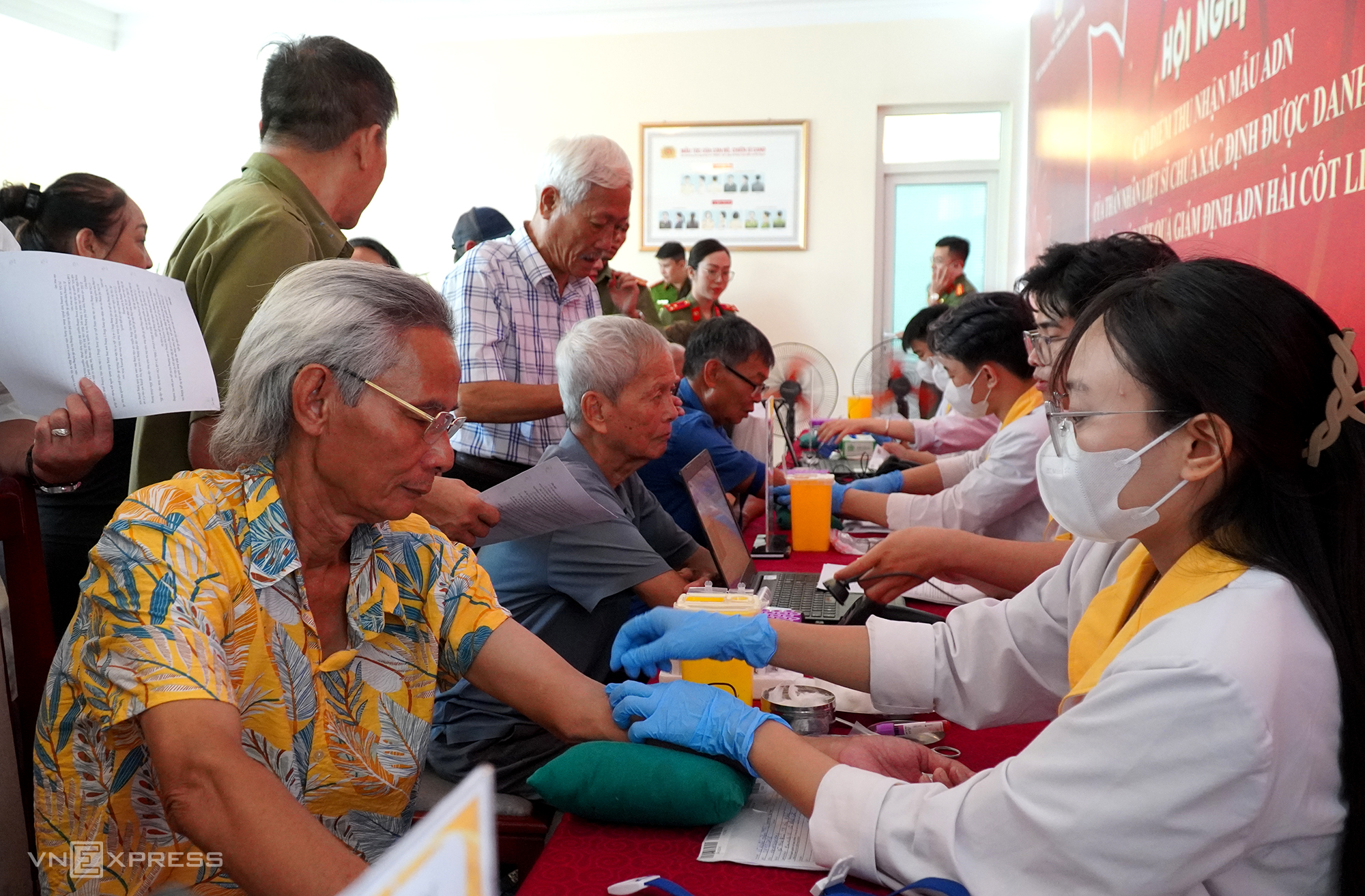 |
On July 26, Thanh Hoa Provincial Police and professional units continued to collect samples from hundreds of relatives of unidentified fallen soldiers in the area. Photo: Le Hoang |
On July 26, Thanh Hoa Provincial Police and professional units continued to collect samples from hundreds of relatives of unidentified fallen soldiers in the area. Photo: Le Hoang
From mid-May to now, the Thanh Hoa Provincial Police have organized two peak DNA collection drives from relatives of unidentified fallen soldiers. Nearly 37,500 DNA samples have been collected so far, awaiting analysis by authorities.
Currently, the country has over 330,000 unidentified fallen soldiers. To identify them through DNA analysis, at least two samples from relatives are required. Thus, over 660,000 DNA samples need to be collected. After a year of implementation, units have collected over 284,000 samples from relatives. As of 20/7, the Ministry of Public Security has completed analysis of 11,138 DNA samples from relatives, identifying 16 soldiers.
Le Hoang









